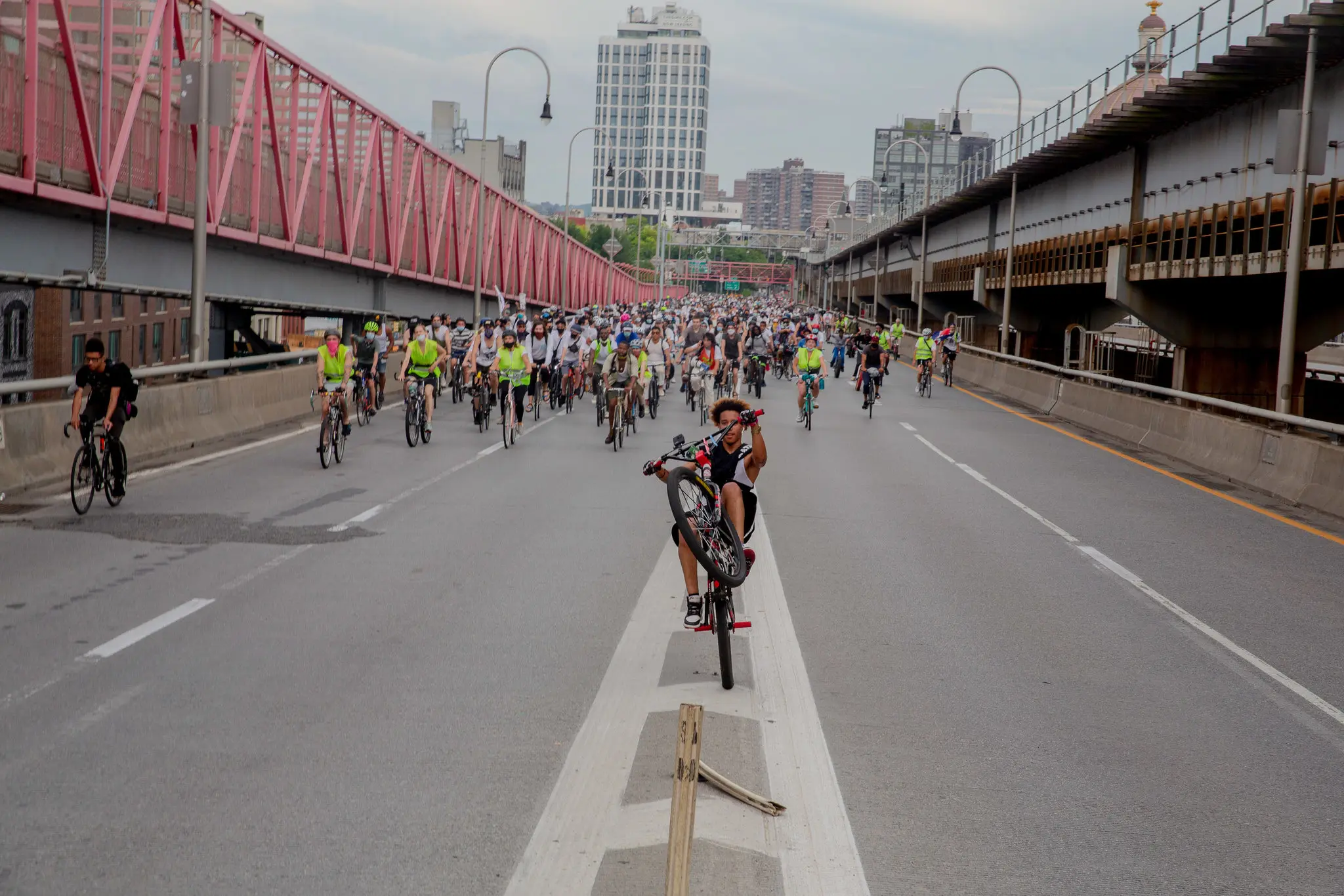With the growth of bike-mounted demonstrations in the wake of the George Floyd killing, Transportation Alternatives interviewed bike lawyer Steve Vaccaro to prepare this cyclists’ rights explainer on how to protest by bike

On a recent night in Brooklyn, a few thousand New Yorkers brought their bikes out to a Black Lives Matter protest. That night, the cyclists were not there in solidarity with protesters on foot — rather, the cyclists themselves were the protest. The ride, organized by StreetRidersNYC, was one of many around the country in response to a police officer killing an unarmed Black man named George Floyd in Minneapolis where a protest is made up entirely of people on bikes. At the protest, organizer Orlando Hamilton told the crowd, “You guys all risked it with us, so thank you, first of all, for coming out.” And there certainly was a risk. Even outside of COVID-19, protesting on a bike can be a risky endeavor. From 1970s “bike-ins” to Critical Mass in the 1990s and 2000s, there is a long history of using bikes to create hyper-mobile protests, and an equally long history of police suppression of these protests.
To help you feel safe while protesting on your bike, Transportation Alternatives spoke with lawyer Steve Vaccaro, who specializes in the legal challenges to cycling and represents cyclists injured by negligent motorists, harmed by negligent and abusive police officers, and who have otherwise had their rights violated. He provided some insight into what a protester on a bike should know about their rights to ride and resist.
Is it safe to bring my bike to a protest?
“There is absolutely nothing illegal or wrong with participating in a demonstration on a bike,” says Vaccaro. “Bikes can help you cover more distance and protest for longer. The First Amendment provides the same protection against government interference to bike-mounted and walking demonstrators, and the police should treat the two similarly.”
However, he cautions that the police often single out cyclists for targeted enforcement, even outside of demonstrations. “The police training materials that I read teach that bicyclists are likely serving as couriers or lookouts for gangs and drug dealers,” he says. “Police officers aren’t trained to see bicycles as a form of transportation or a legitimate component of traffic. It’s no more unlawful to bring a bike than a wheelchair to a demonstration, but cyclists are usually higher on cops’ radar.” According to Vaccaro, officers are trained to view cyclists as a source of criminality, misconduct, and chaos.
Police also may not distinguish between protesters and passers-by on bikes. “Cyclists accompanying and mixed in with a largely pedestrian demonstration can become a focus for police, and any cyclists in the vicinity should be aware that they may be corralled in with the protesters.” Essential workers or otherwise police-vulnerable people who don’t want to risk arrest should avoid the area.
It is often a situation of you’re good until you’re not. “Police may escort a bike demonstration as if it were a parade, even stopping vehicular traffic at intersections to let the cyclists through,” he warns, “but then suddenly begin to contain, forcibly dismount or otherwise brutalize or arrest demonstrators. Don’t be lulled into a false sense of safety, keep an eye on the police.”
Does being on a bike change my rights or status as a protester?
If I do bring my bike to a protest and an officer targets me, what should I do?
Can I be arrested for blocking traffic?
Can police officers use their own bikes as battering rams or weapons?
For the full explainer, visit here: https://transalt.org/blog/bikes-protests-amp-police-know-your-rights-when-you-bring-your-bike-to-the-protest
